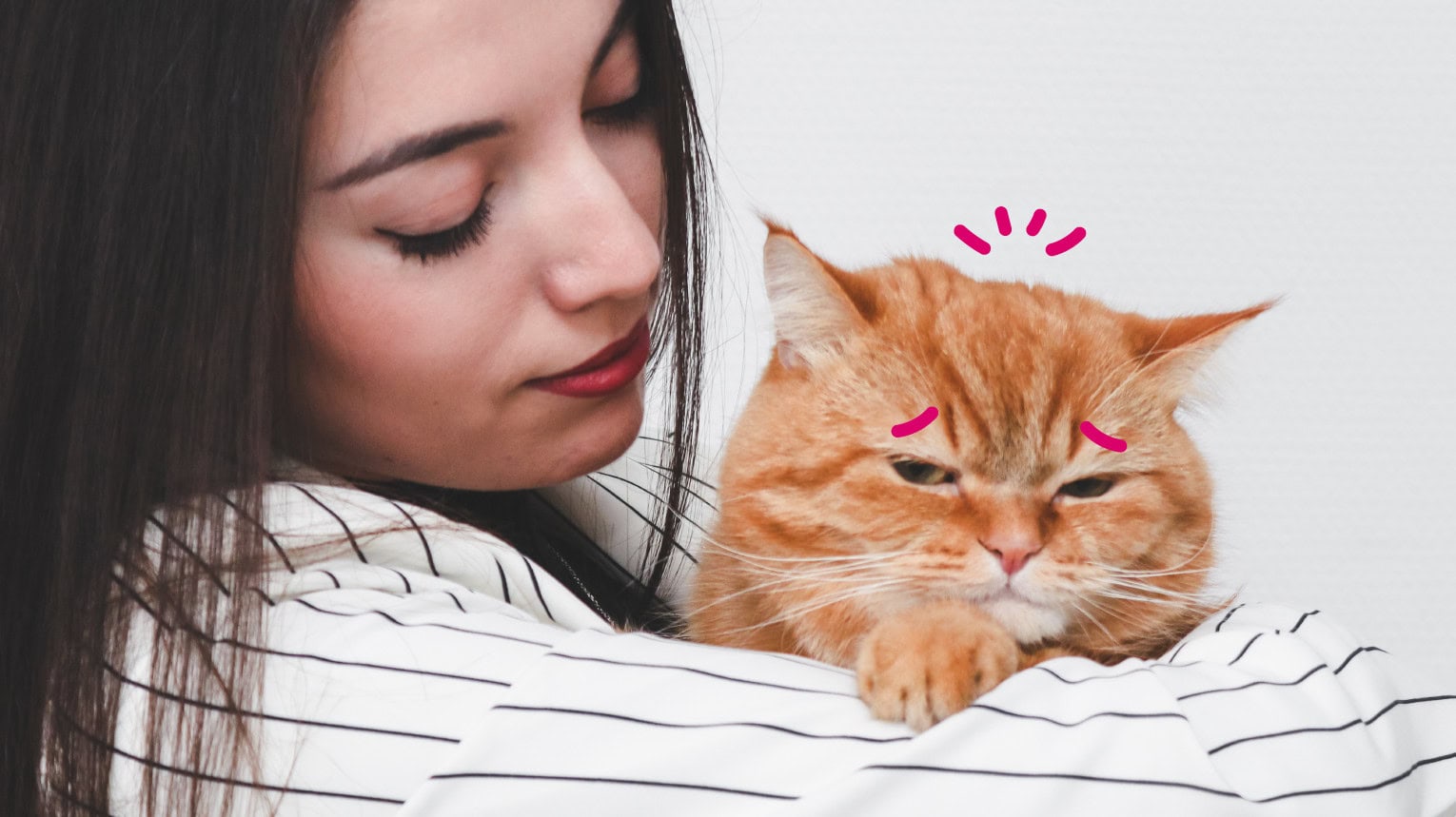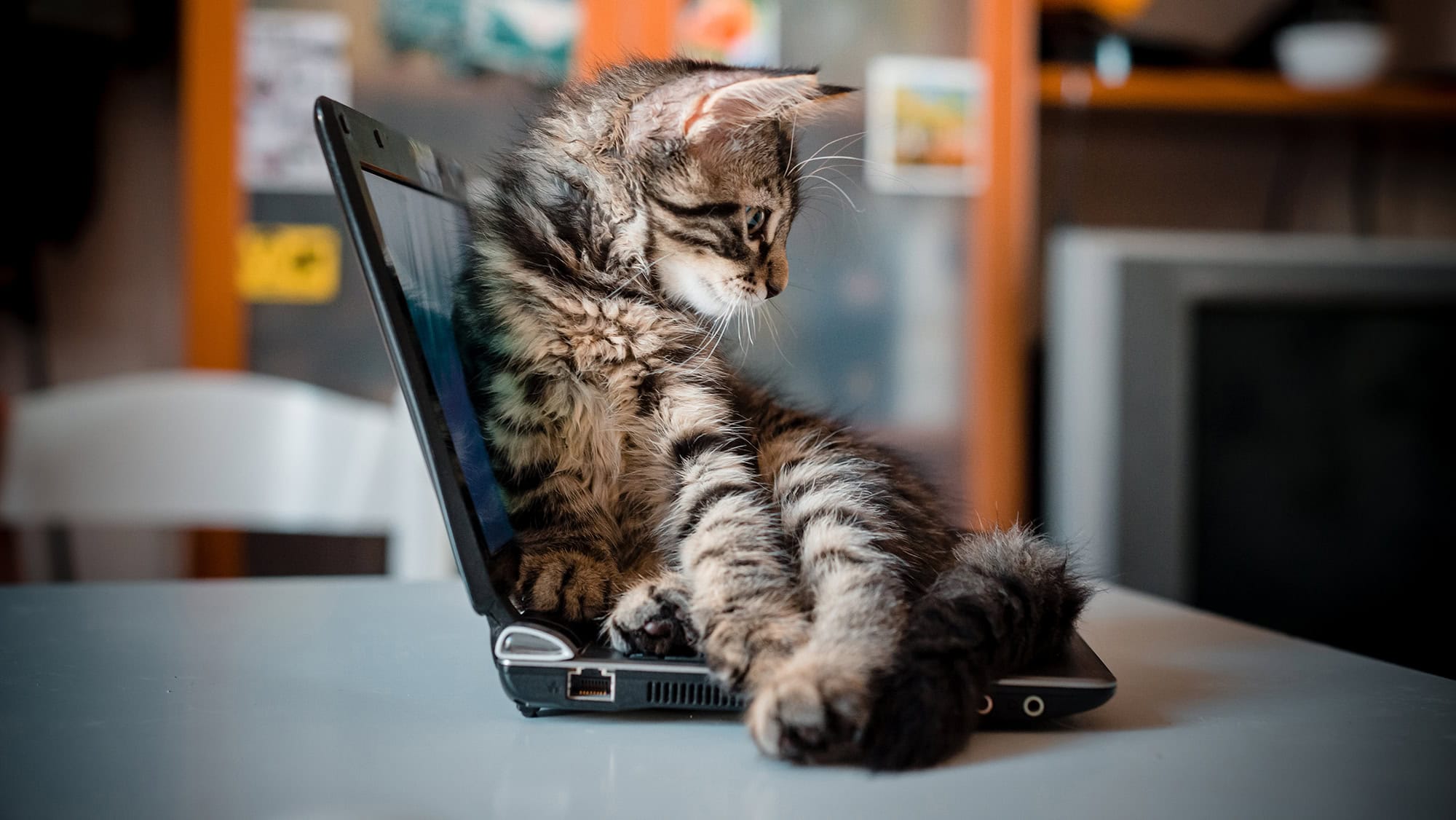Cats hide signs of pain as a defense mechanism. It is a survival instinct that has developed over time so they do not appear vulnerable to predators in the wild. Because of this instinct, it can be difficult for owners to recognize when their cats are in pain, discomfort, or distress.
Although cats are good at hiding signs of pain, there are subtle cues that allow veterinarians like myself as well as pet parents to know something may be wrong.
By knowing how to tell if your cat is in pain, you will be better equipped to ensure your furry friend gets the care they need.
Let’s explore these signs to ensure your furry friend gets the care they need:
1. Trembling
A more noticeable sign may be trembling or shivering. This can occur if a cat is experiencing musculoskeletal pain, abdominal pain, urinary tract pain, dental pain, or even neurological pain.
2. Changes in Daily Activities
Appetite
A decrease or increase in appetite, refusal to eat, or changes in drinking patterns can indicate pain somewhere.
Indoor accidents
Cats may have accidents outside of their litter box if it is uncomfortable to go to/from the litter box.
Some cats experiencing pain while urinating or defecating may go outside the litter box as they associate pain occurring when inside the litter box.
Straining, blood in urine or feces, and frequent accidents further support your cat is in pain.
Decreased or increased grooming
Cats may decrease or neglect grooming altogether if it is painful to get into position to groom or if they are not feeling well.
Some cats may experience excessive grooming if stressed due to pain or groom an area more frequently that is painful.
3. Increased Respiratory and Heart Rate
Pain activates the body’s stress response, releasing hormones such as adrenaline and cortisol. These hormones increase heart rate, respiratory rate and blood pressure. Anxiety and fear associated with pain can also increase the respiratory and heart rate.
4. Posture & Body Language
Pay close attention to your cat’s body language. Unusual positions, like a hunched back or tucked tummy, could be signs of pain.
Arched back
A cat with an arched back & lowered head may be experiencing pain. This could be due to gastrointestinal discomfort, urinary tract pain, back pain, muscle pain, or other internal discomfort.
Tucked tummy
Cats may tuck their tummy if experiencing abdominal or musculoskeletal pain. Tucking their tummy reduces movement in the abdominal region, thus protecting the internal organs.
Tucking can help to reduce the movement of painful muscles, joints, or bones.
Tense body
Keeping the body tense with rigid muscles restricts movement in a painful region.
Guarding or shying away
Guarding a certain area of their body or shying away can indicate they are painful.
Limping
Cats may avoid putting weight on a painful limb. They may hold the limb up or walk in a way that reduces the amount of pressure placed on the sore limb.
5. Vocalizing
Hissing, growling, yowling, or excessive vocalization can be a sign of pain. This may occur during movement, going to the bathroom, or when touched in a painful area.
6. Drooling
Drooling can indicate stress secondary to pain, nausea or abdominal pain, dental or other oral pain, or a neurological injury.
7. Lethargy
Reduced activity, sleeping more, and lower energy can indicate pain.
8. Difficulty Moving
It may be difficult or too painful to move if a cat is experiencing musculoskeletal or abdominal pain.
9. Facial Expression
Veterinarians will sometimes refer to the Face Grimacing Scale to gauge whether a cat is in pain. The scale includes facial indicators such as:
-
Dilated pupils
-
Squinted eyes
-
Tense muzzle
-
Whiskers may be straightened or bunched together
-
Ears flattened and rotated outward
-
Head position below shoulder line or tilted
10. Behavioral
Watch out for behavior changes in your cat, like getting grumpy, hiding away, or not being able to settle down. These could be signs they’re not feeling tip-top.
Aggression
Cats may react aggressively to protect themselves or body parts that are painful.
Hiding
Cats may hide as an instinct to protect themselves from predators. They may hide to rest and recover from an injury
Decreased socializing
Cats are solitary by nature, so reducing social interactions can help them reduce stress and conserve energy.
Restlessness
Inability to get comfortable when at rest or trying to lie down can indicate pain somewhere in the body.
Agitation
Pain and discomfort can increase stress and anxiety, leading to agitation.
When to Seek Veterinary Care for a Cat in Pain
If your cat is experiencing any of the above symptoms or if their behavior just seems off, it is worth a visit from the veterinarian. Cats are skilled at pretending everything is alright, but any changes, even if subtle, can be a sign something is wrong.
If you notice any signs that persist for more than 24 hours, schedule an in-home vet visit with the BetterVet team.
Frequently Asked Questions
What do I do if my cat is hiding and won’t let me touch them?
Your cat may be hiding due to pain or discomfort. If they won’t let you touch them, reach out to BetterVet to schedule an in-home or virtual visit to better identify the problem and give you pointers on how to safely approach them.
What can I do if my cat is in pain?
It is best to have your cat evaluated by a veterinarian to determine the cause and severity of the pain. Your veterinarian will develop a plan and provide pain management prescriptions to help your cat feel better.
Are there pain medications for cats?
Yes, there are several medications available to cats, from NSAIDs to opioids and even injectable therapy, that treat pain in cats. Because these are prescriptions, they require a veterinarian to prescribe them and ensure the right type of prescription is given for the particular type of pain.
Sources:
-
Merola I, Mills DS. Systematic review of the behavioural assessment of pain in cats. Journal of Feline Medicine and Surgery. 2016;18(2):60-76. doi:10.1177/1098612X15578725
-
Monteiro BP, Lee NH, Steagall PV. Can cat caregivers reliably assess acute pain in cats using the Feline Grimace Scale? A large bilingual global survey. Journal of Feline Medicine and Surgery. 2023;25(1). doi:10.1177/1098612X221145499





